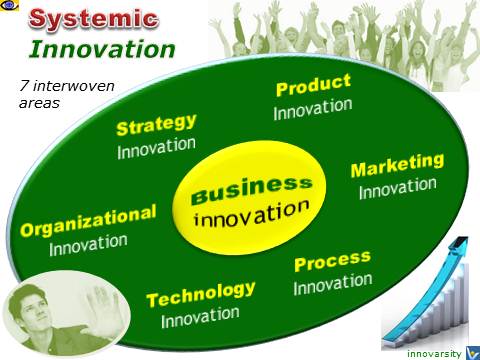Systems Thinking: Focusing On the Whole,
Not the Parts, of a Complex System
Systems Thinking: Focusing
On the Whole, Not the Parts, of a Complex System
Systems Thinking: Focusing On the Whole, Not the Parts, of a Complex System

System Defined
A system is an entity which maintains its existence and functioning as a whole for some purpose through the mutual interaction of its parts.
Systems Thinking Defined
Systems thinking is your ability to see things as a whole (or holistically) including the many different types of relationships between the many elements in a complex system. “Systems thinking is a sensibility —for the subtle interconnectedness that gives living systems their unique character.”7
The Goal of Systems Thinking
The goal of systems thinking is to manage the rapidly growing complexity of the worlds of business and technology. The task of a business architect and a process manager is to create systems, within a sensibly structured business, that empowers employees and enables people to achieve higher productivity and greater competitive advantage.
The Focus of Systems Thinking
Systems thinking “focuses on the whole, not the parts, of a complex system. It concentrates on the interfaces and boundaries of components, on their connections and arrangement, on the potential for holistic systems to achieve results that are greater than the sum of the parts. Mastering systems thinking means overcoming the major obstacles to building the process-managed enterprise – for every business process is a whole system.”2
Growing Demand for Systems Thinking
“End-to-end business processes are dynamic systems, but today's business professionals are generally not trained in general systems thinking. Too often constrained to a perspective limited by ingrained business practices, rigid scripts and structured input-output work, few professionals have a wide-angle view of, or experience dealing with, end-to-end business processes.”2
Balancing the Five Basic Elements of Nature
The Five Basic Elements are Fire, Earth, Water, Metal, and Wood. According to the ancient Chinese belief, those are the basic elements of the universe and everything in our word is a compound of the five elements. These elements are understood as different types of energy in a state of constant interaction and flux with one another.
The most important of all is the balance of all five elements.
Systems Thinking and Modern Management
The system approach to management is based on general system theory—the theory that says that to understand fully the operation of an entity, the entity must be viewed as a system. This requires understanding the interdependence of its parts.
Systems Thinking and Cross-functional Management (CFM)
Cross-functional management (CFM) manages business processes across the traditional boundaries of the functional areas. In Total Quality Management (TQM) and Kaizen, the cross-functional goals of QCD (Quality, Cost, Delivery) are clearly defined as superior to such line functions as planning, design, production and sales. The positioning of cross-functional goal as superordinate ones necessitates a new systems approach to management, thinking and decision making.
The Power of Your Cross-Functional Excellence
If you build broad cross-functional expertise, no idea will be wasted! Your mind can accept only those ideas that have a frame of reference with your existing knowledge. It rejects everything else. If your knowledge is functionally focused, you'll be open to new ideas related to your functional expertise only and will miss all other learning and innovation opportunities. If you develop a broad cross-functional expertise, no new idea will be wasted. It will immediately connect with the existing knowledge and will inspire you, energize you, and encourage your entrepreneurial creativity. The broader your net, the more fish you catch.
Apply 80/20 Analysis
80/20 Analysis examines the relationships between two sets of comparable data and can be used to change the relationships it describes. One its use is to discover the key causes of the relationship, the 20% of inputs that lead to 80% of outputs, and put your resources behind the best-performing efforts. The second main use of 80/20 Analysis is to improve the effectiveness of the underperfroming 80% of inputs that contribute only 20% of the output.
80/20 Analysis should be applied carefully, in a systemic way, as opposite to linear thinking that may lead to misunderstanding of the 80/20 Principle and its potential abuses. "Don't be seduced into thinking that the variable that everyone else is looking at... is what really matters. This is linear thinking. The most valuable insight from 80/20 Analysis will always come from examining non-linear relationships that others are neglecting."11.
Application Value Chain Management and Value System Analysis
Your firm's value chain links to the value chains of upstream suppliers and downstream buyers. The result is a larger stream of activities known as the value system. The development of a competitive advantage depends not only on your firm's specific value chain, but also on the value system of which your firm is a part.
Making breakthrough improvements in your value chain requires out of the box, cross-functional, systems thinking. You have to see the value creation process across the entire flow of work, not just single points.
